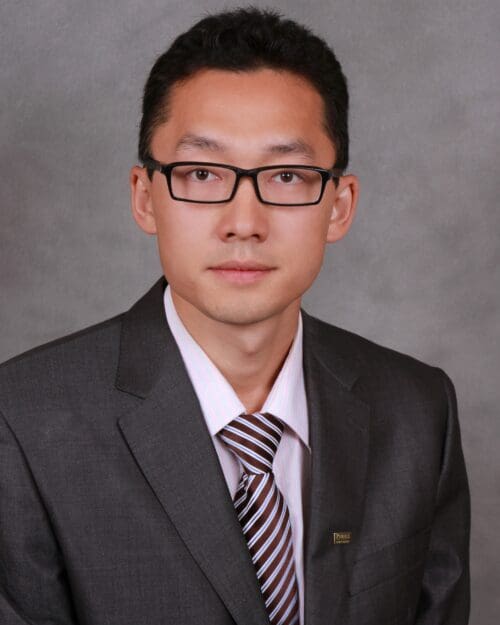Lionhearted Leaders: Tom Liu

Tom Liu uses creativity in experiential learning
Yun (Tom) Liu, assistant professor of Mechanical Engineering in the College of Engineering and Sciences, feels that students better understand math and physics when they make real-world connections to the subject matter.
Liu feels some of his introductory-level students can enter his classroom with a good comprehension of the theory, but sometimes lack in the application. He made a commitment in his teaching to using real-world examples to illustrate how concepts are used.
“I remember when I was an undergrad I also felt overwhelmed and didn’t always know how to connect knowledge from lecture to reality,” says Liu. “I’m trying to build that which is missing. I’ll show why we use an equation, or why an equation is so important. Sometimes I’ll try to explain equations without using the symbols and just substitute language. It’s not rocket science, it’s common science!”
Reimagining experiments
An example of this teaching philosophy Liu likes to think back to can be found when students had to shift to virtual learning at the beginning of the COVID-19 pandemic. Liu had to use creativity to continue their lesson plans, such as his example of a homemade wind tunnel for engineering wind experiments.
“The biggest concern was if we do everything online, then the lab part was going to be missing,” says Liu. “Experiential learning added a missing piece to the puzzle to get more hands-on experience.”
Liu got to work building a makeshift device from scratch using cardboard, a computer fan, and other readily available materials from a home or hardware store. He provided the diagram for students so they could construct it themselves and proceed with their lessons.
His homemade model was even used as an activity during the 2021 PNW Engineering Summer Camp.
“It turns out it’s really good practice,” says Liu. “It helps expand our idea of the conventional lab session. There are easily accessible materials and no time limit.”
Problem-solving challenges
Liu is also inspiring students to take on today’s challenges through research and clubs, such as the Aerosolar Engineering Club. One of his current research topics involves renewable energy and aerospace engineering.
Since 2018, Liu has been researching how to better capture solar energy. Many solar panels often have to be constricted to the ground, but theoretical data shows solar radiation is stronger at higher altitudes above clouds, he says.
Liu worked with six students at PNW’s Westville campus to develop a weather balloon and platform to measure solar radiation at a higher altitude.
“I was very encouraged and inspired by those students,” Liu said. “They were very self-motivated and started building the platform and put the components together.”
In the same time period as the group was collecting data, the international Global Space Balloon Challenge was taking place. Liu entered his group’s project among around 400 other Universities. PNW’s group earned an honorable mention in the challenge for best design, which was equivalent to third place, Liu says.
“Our idea provided useful information to the engineering field for solar energy,” says Liu. “I just help them (students), but they’re taking the initiative. I give them the resources to solve the problem and they just push themselves forward.”